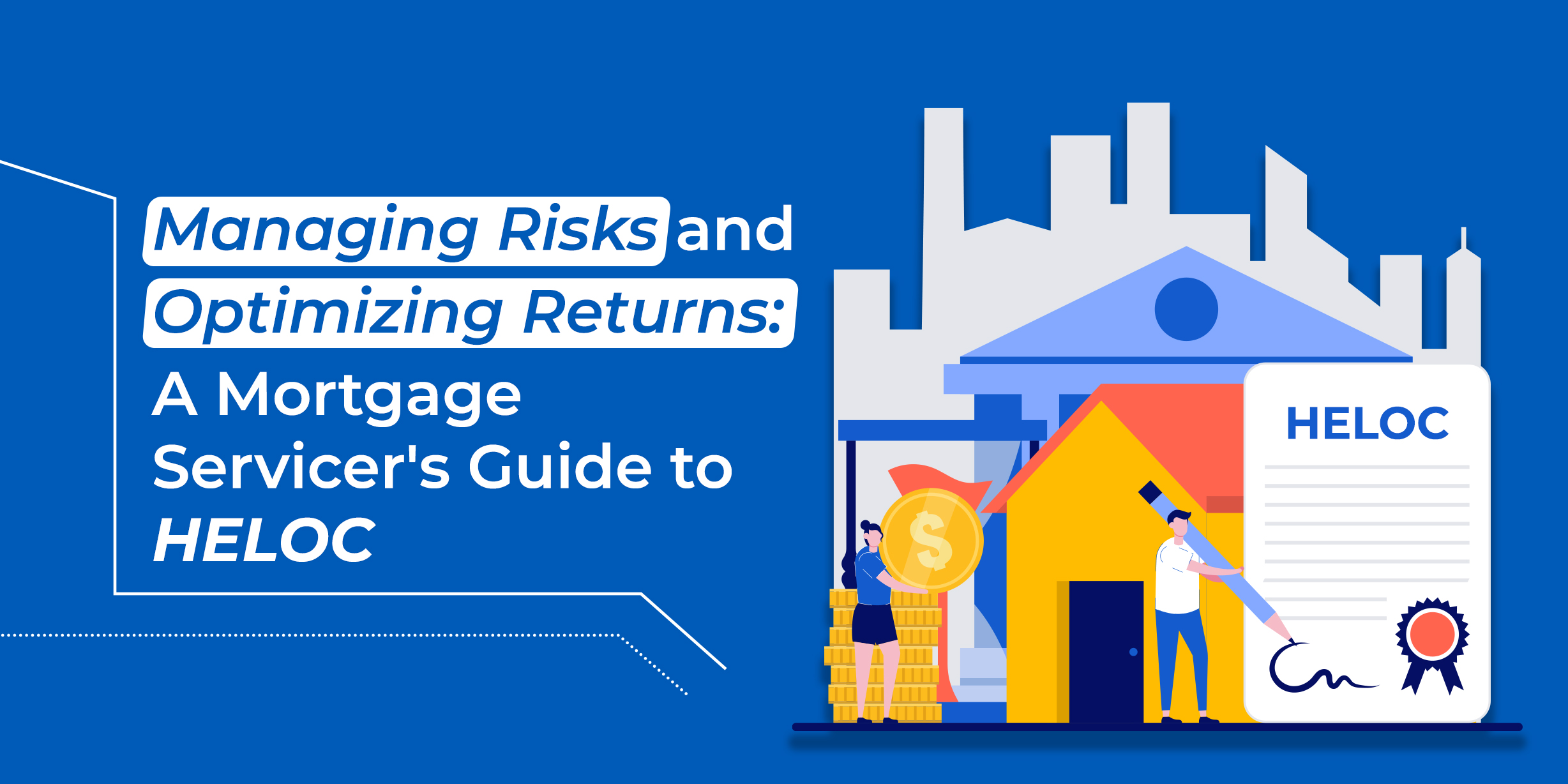Home Equity Line of Credit (HELOC) is a popular way to extend a flexible line of credit to homeowners by using their property as collateral for the loan. It can be an attractive option for new homeowners looking to fund big projects like extensive repairs and renovations. Borrowers can also opt for a HELOC on their relatively old properties for large expenses like education.
HELOC or Home Equity Line of Credit can be a lucrative product for lenders and mortgage servicers as well, since it is low-risk and linked to a secure collateral. In today’s volatile economy, as households face growing costs of living, many turn to HELOC for essential large-scale expenditures. Mortgage servicers need to know about the best practices surrounding HELOC portfolio management to obtain maximum value from these home equity loans.
1. Pay close attention to fraud risk amid growing volumes
HELOCs, like any other type of real estate lending transaction, are susceptible to fraud. Often, lenders will overlook the risk of intercepted transactions, data theft, and identity fraud in the case of Home Equity Line of Credit loans because it is obviously tied to valuable physical collateral. The risk of this is particularly high when HELC volumes are on the rise.
In 2022, the number of HELOC mortgages increased by 50% compared to the previous year, and it has continued to grow in 2023. Lenders need to pay close attention to fraud mitigation in such scenarios, as home equity loans do not have the same stringent processes as traditional first mortgages.
For example, those looking to defraud banks could apply for multiple HELOC loans concurrently while escaping detection. There’s also a risk of occupancy misrepresentation, particularly in communities with aging homeowners. Lenders and servicers need to establish the right checks and balances to protect against such risks.
Read More: ChatGPT and the Future of Mortgage Servicing: A Look into Intelligent Chatbots
2. Regularly monitor and report on your liens
A booming HELOC business can lead to unprecedented growth in your HELOC portfolio, which can make it difficult to monitor and report on your liens with exacting regularity. Especially in the case of Home Equity Line of Credit, old properties and complicated titles may be subject to unexpected changes in liens. Servicers can leverage automated monitoring solutions that make this easier.
Automated solutions can help you keep track of key lien events such as name changes, loss of good standing, or new liens filed against the borrower. It can even trigger alerts in case of notable events, for instance, a merger or the dissolution of a commercial entity. This best practice can also help you reduce the risk of HELOC fraud and maintain better oversight over the borrower and the collateral.
3. Openly communicate amortization options
Fully or partly amortizing a Home Equity Line of Credit loan can help lessen the debt burden for borrowers and ensure predictable cash flow for the lending and servicing organization. However, borrowers may not always have the requisite financial education and understanding to choose the most suitable amortization for them. A wrong decision and an expensive loan can lead to greater default risk later on.
That is why you need to openly communicate possible amortizing terms so that the borrower can choose a route that is comfortable and reasonable for them. Make sure to inform them about fixed-rate and variable-rate changes so that they don’t receive a rude shock when the real estate equity loan exceeds the fixed-rate period.
As a best practice, borrowers should be provided with a clear repayment schedule in both physical and digital formats, which is easy to reference and follow. You can also adopt servicing automation for routine notifications and follow-ups in case of partly amortized loans.
4. Build a robust data analytics capability
The success of real estate lending products like HELOC hinges on mortgage servicers’ ability to assess and take on the right amount of underwriting risk, predict default scenarios before they can happen, and take timely action. To achieve this, you need a robust data analytics capability that can ingest large amounts of data from internal sources as well as external intelligence if you do not have significant HELOC exposure.
Based on the insights acquired, servicers can formulate HELOC policies describing procedures to assess overall portfolio risk after origination, updating loan-to-value ratios, etc. Data-driven policies must also include possible remediation plans, such as freezing or closing the line of credit in a compliant manner.
How Nexval can help
Home Equity Line of Credit (HELOC) loans can help mortgage companies diversify and grow their portfolio beyond traditional first mortgages and refinancing. HELOCs also come with a slightly lighter regulatory burden and provide assured cash flow due to the secure nature of the collateral. Knowing how to effectively service HELOC loans can help lenders boost revenues and strengthen their relationships with borrowers.
At Nexval, we work with leading financial service providers in the US to streamline their mortgage processes. We build tailored digital solutions to preempt servicing bottlenecks and our team of 1000+ SMEs can significantly reduce the operational workload associated with your HELOC portfolio.
To learn more, speak with our tech experts today.



